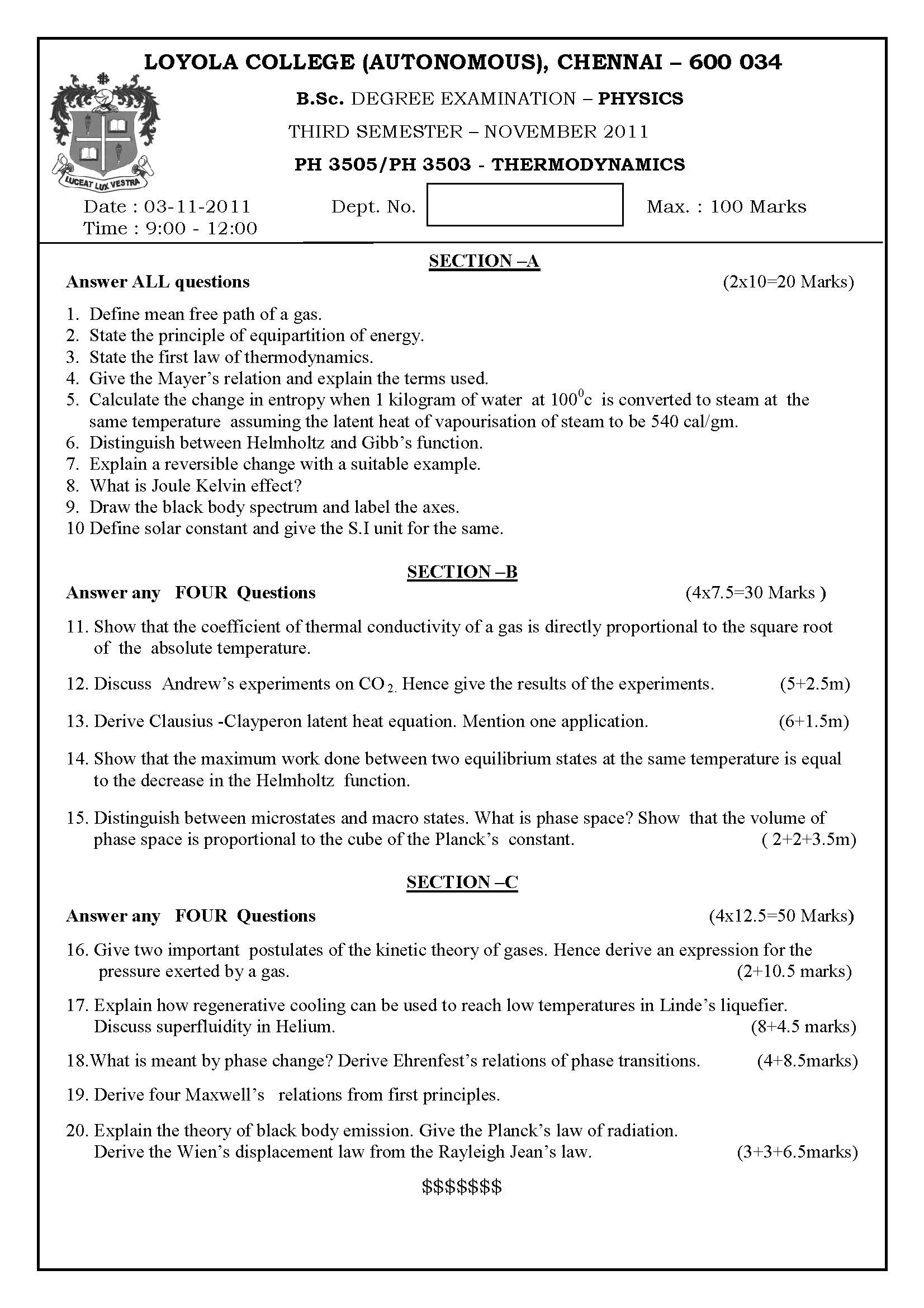LOYOLA COLLEGE (AUTONOMOUS), CHENNAI – 600 034
B.Sc. DEGREE EXAMINATION – PHYSICS
THIRD SEMESTER – APRIL 2011
PH 3505/PH 3503 – THERMODYNAMICS
Date : 25-04-2011 Dept. No. Max. : 100 Marks
Time : 1:00 – 4:00
SECTION – A
Answer ALL the questions (10×2=20)
- Give the dimensions of coefficient of viscosity.
- State the principle of equipartition of energy.
- Define the molar heat capacities for a gas.
- Define super fluidity.
- 7 J of heat is supplied to a system and the internal energy of the system decreases by 4 J.
Find the work done.
- Define enthalpy.
- Write down the Gibbs – Helmholtz equation.
- What is phase transition? Give an example.
- Define thermodynamic probability.
- Define Solar constant.
SECTION – B
Answer Any FOUR the questions (4×7.5=30)
- Obtain the expression for the pressure of an ideal gas, from the kinetic theory of gases,
and hence the ideal gas equation of state. (5+2.5)
- Explain the process of liquefying hydrogen.
- a) State the second law of thermodynamics.
- b) From the first law of thermodynamics, obtain the relation:
(2.5+5)
- Obtain the Maxwell’s thermodynamic equations.
- (a) Define microstates and macro states.
(b) How will you distribute 3 particles among 4 states under Maxwell-Boltzmann,
and Bose-Einstein statistics? (3.5+4)
SECTION – C
Answer Any Four the questions (4×12.5=50)
- Obtain the Maxwell’s speed distribution for the molecules of an ideal gas.
- (a) Discuss Clement-Desormes method to determine the ratio of specific heats.
(b) List any two properties of He I and of He II. (8.5+4)
- (a) Obtain the Clausius inequality.
(b) One mole of an ideal gas expands isothermally to four times its initial volume.
Calculate the entropy change in terms of R, the gas constant. (8.5+4)
- a) Explain Joule-Kelvin effect. Obtain an expression for the Joule-Kelvin coefficient.
Discuss the significance of the various terms in it.
- b) Explain Eherenfest classification of phase transitions. (9+3.5)
- Derive the Planck’s law of black body radiation from Bose – Einstein statistics.


